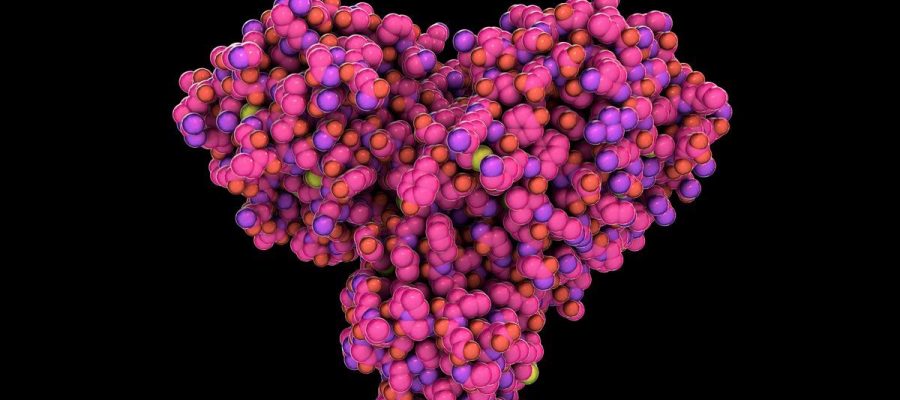A recent article posted to the bioRxiv* preprint server illustrated the structural and biochemical characteristics of the processing of severe acute respiratory syndrome coronavirus 2 (SARS-CoV-2) polyproteins by main protease (Mpro).

Background
The ongoing worldwide CoV disease 2019 (COVID-19) pandemic is caused by a human CoV called SARS-CoV-2. COVID-19 had enormous global ramifications in terms of the number of infected individuals, mortality, and rate of virus propagation.
The approximately 30 kb positive-sense ribonucleic acid (RNA) SARS-CoV-2 genome is translated into two enormous polyproteins. These polyproteins are subsequently cleaved by viral Mpro/nonstructural protein 5 (nsp5) and papain-like protease. A synchronized polyprotein processing is critical for controlling the SARS-CoV-2 life cycle. Further, although polyprotein processing is essential, it is poorly understood. Indeed, compared to the plethora of solved mature, post-cleavage protein structures, polyprotein structural knowledge is severely lacking.
About the study
The present work analyzed Mpro-facilitated processing of the SARS-CoV-2 nsp7 to 10/11 polyprotein, whose mature products were viral replicase cofactors. Considering their multidomain structure and significantly dynamic nature, the authors used a multi-pronged strategy to investigate the structural basis of the SARS-CoV-2 nsp7 to 10 and nsp7 to 11 polyprotein processing by Mpro in vitro. The nsp7 to 11 and nsp7 to 8 polyproteins and wild-type Mpro were produced and purified to evaluate the SARS-CoV-2 polyproteins' proteolytic cleavage order.
Three-dimensional (3D) models of the nsp7 to 10/11 polyprotein were established using X-ray scattering and mass spectrometry (MS)-based integrative modeling, such as cross-linking and hydrogen-deuterium exchange (HDX). In detail, the team used pulse-labeling and gel-based MS approaches to characterize the processing kinetics and the polyprotein footprint on Mpro and the other way around. They also utilized molecular modeling, MS, and small-angle X-ray scattering (SAXS) to determine the integrative structures of the nsp7 to 11 and nsp7 to 8 polyproteins.
Finally, the researchers employed restricted proteolysis inhibition experiments to investigate the effects of a range of binders/inhibitors on Mpro inhibition and nsp7 to 11 Mpro processing. For this, they used a full-length polyprotein as the substrate.
Results and discussions
The authors stated that the nsp7 to 11 polyproteins were cleaved in the following order: 1) nsp9 to 10, 2) nsp10 to 11/nsp8 to 9, and 3) nsp7 to 8. The cleavage of the nsp9 to 10, nsp10 to 11/nsp8 to 9, and nsp7 to 8 occurred at nearly 30 minutes, two hours, and four hours, respectively. This cleavage order was comparable to the polyprotein processing sequence documented for SARS-CoV-1, which was anticipated considering their prominent conservation of amino acid sequences.
Besides, the processing of the nsp7 to 10 polyproteins gave similar findings. This shows that the existence of nsp11 does not affect the cleavage order of polyproteins. Furthermore, the investigators demonstrated that changing the ratio of Mpro to polyprotein did not impact the cleavage order, confirming Mpro's selectivity and the lack of a concentration-reliant cleavage activity. The team noted that the structural milieu surrounding the nsp7 to 8 junction obstructs effective Mpro cleavage relative to the other junction locations.
Additionally, the nsp7 to 11 and nsp7 to 8 processing findings indicated the existence of the nsp7 to 8 intermediate 24 hours following Mpro exposure. It was unclear whether this long-lived intermediate plays any functional or vital action in the SARS-CoV-2 cycle; additional nsp7 to 8 maturation inhibition could be a novel therapeutic target.
Notably, the pulsed HDX-MS experiment results corroborated the cleavage order derived from the gel analysis. Using the multitude of Mpro-ligand structures available, the team identified a group of binders, some of which had antiviral properties and overlapped with Mpro areas pertinent for polyprotein attachment external to its active site. The nsp7 to 10/11 signature protected V77-L89 residues from the solvent exchange not observed in the vicinity of nirmatrelvir (NMTV). These residues were found on the rear of the catalytic domain, adjacent to K61 and S62 residues, which establish inter-Mpro-nsp7-11 crosslinks. Therefore, they were most likely the result of more transitory Mpro-polyprotein interactions far from the active site.
These findings showed that the nsp7 to 10/11 structure coupled with Mpro closely mimics the unbound polyprotein. Moreover, the cleavage preference and order by Mpro were determined by both junction accessibility and polyprotein conformation.
Conclusions
The scientists stated that the current experiments discovered the sequence in which Mpro processes the SARS-CoV-2 polyproteins and offered insights into the polyprotein substrate's binding to Mpro. However, they noted that if the same in vitro pattern of cleavages happens during SARS-CoV-2 replication was unclear.
Overall, the findings of this study contribute to a better comprehension of the function of polyproteins in SARS-CoV-2 replication. They aid in the knowledge of drug design, structure-function associations, and the basic biology of polyprotein function and processing in SARS-CoV-2 infection.
*Important notice
bioRxiv publishes preliminary scientific reports that are not peer-reviewed and, therefore, should not be regarded as conclusive, guide clinical practice/health-related behavior, or treated as established information.
- Yadav, R. et al. (2022) "Biochemical and structural insights into SARS-CoV-2 polyprotein processing by Mpro". bioRxiv. doi: 10.1101/2022.05.27.493767. https://www.biorxiv.org/content/10.1101/2022.05.27.493767v1
Posted in: Medical Science News | Medical Research News | Disease/Infection News
Tags: Amino Acid, Coronavirus, Coronavirus Disease COVID-19, covid-19, Cross-Linking, Genome, in vitro, Ligand, Mass Spectrometry, Mortality, Pandemic, Propagation, Protein, Respiratory, Ribonucleic Acid, RNA, SARS, SARS-CoV-2, Severe Acute Respiratory, Severe Acute Respiratory Syndrome, Spectrometry, Syndrome, Virus, X-Ray

Written by
Shanet Susan Alex
Shanet Susan Alex, a medical writer, based in Kerala, India, is a Doctor of Pharmacy graduate from Kerala University of Health Sciences. Her academic background is in clinical pharmacy and research, and she is passionate about medical writing. Shanet has published papers in the International Journal of Medical Science and Current Research (IJMSCR), the International Journal of Pharmacy (IJP), and the International Journal of Medical Science and Applied Research (IJMSAR). Apart from work, she enjoys listening to music and watching movies.
Source: Read Full Article
